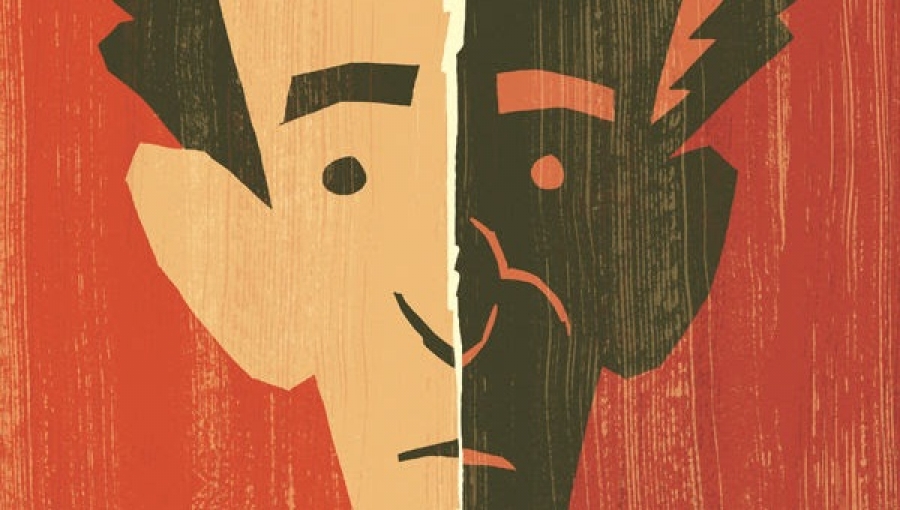Fábio Moon and Gabriel Bá, twin brothers and award-winning comic book writers and artists, bring us a riveting retelling of renowned Brazilian author Milton Hatoum’s novel, The Brothers. Moon and Bá’s Eisner and Harvey Award-winning reputations precede them with Daytripper, The Umbrella Academy, and a variety of additional titles for Dark Horse and Image Comics under their joint (and separate) belts.
Two Brothers is set in the Brazilian city of Manaus, smack in the middle of the Amazonian rainforest. It is geographically isolated, accessible primarily by plane and boat, with the only ground transportation from Manaus to the rest of Brazil requiring the driver to exit and re-enter Brazil’s national borders. It is a city rich in Native Brazilian, European colonial, and multinational immigrant influences . . . including a community of Lebanese immigrants that play a prominent role in the story. The Manaus in Two Brothers has a strong visual sense of place and history, with vast political currents popping up throughout the story.
Manaus sits at the confluence of the Rio Negro and Solimões rivers, whose waters are so dissimilar that, on their course through the city, they do not mingle, even where they flow side by side. This physical separation forms the fundamental analogy of the story . . . two brothers whose personalities, decisions, desires, and motivations are rooted on the opposites sides of a vast gulf and will never meet.
The brothers are Yaqub and Omar, twins who are separated at a young age by jealousy, violence, and the preferential treatment of one brother over the other by a doting mother. Their story is told by a narrator who, in the beginning of the tale, floats above the story like a ghost, mysterious and unidentified. His identity and role become increasingly more significant as the story progresses, an orbiting satellite caught in the gravity of this damaged family.
The relationship between Two Brothers and the Biblical story of Cain and Abel is conspicuous, and, for me, there were immediate associations with John Steinbeck’s East of Eden. We find similar thematic elements coursing through all of these stories: uncertain parentage; obsession; depravity; guilt; love; abuse; the struggle for acceptance and personal freedom; and the capacity for self-destruction. The twins play out these themes in an ever-escalating series of retributions that leave no one in their spheres undamaged.
In terms of prose, it’s a beautifully retold story, if not with some issues that are endemic to the shortened format of a graphic novel. In attempting to condense a complex multi-generational tale, the flow of the narrative sometimes feels disjointed, especially in the opening chapters as we are familiarizing ourselves with the cast of players. It can feel as if we are skimming the surface of the story, disconnected, separate, and removed from the characters.
This distance between audience and character is felt strongest in Zana, the twins’ mother. It is clear that she is affected by the death of her father at a young age, has a great physical passion for her husband, and a near Oedipal attachment to her younger son, Omar. I did not, however, feel that we had the opportunity to really explore her motivations or psychology. Why the overwhelming need to have children and then the inability to love both of her sons equally? What idiosyncrasies of personality does this mark?
The heart of the story is found in the narrator’s unwavering voice. He treats all of the members of this dysfunctional family with a steadfast measure of empathy, even when his own circumstances are affected by their unbridled passions, emotional inadequacies, and vindictive obsessions. It is his voice that maintains the center line for all of these themes, his voice alone that survives all of the damage inflicted.
Illustrated entirely in basic, black-and-white lines, Moon and Bá achieve a stunning visual impact. Characters and cityscape, light and shadow, drenching rain and lush jungle are illustrated in bold, sweeping strokes. Every panel is permeated with a sense of fracturing . . . hard edges, conflicting angles, and a stark, unforgiving contrast in absolute black and white. Manaus is given a vibrating presence in the background of the story, colonial architecture, waterfront, and jungle all mingling together.
Two Brothers is an earthquake both visually and narratively, the earth split in two and unrepairable. The forces that pull and push at the central relationship are impossible to influence or manipulate off course. Moon and Bá are in clear control of every element of Two Brothers, bringing to life a city, history, and compelling story of a family locked in obsession.

